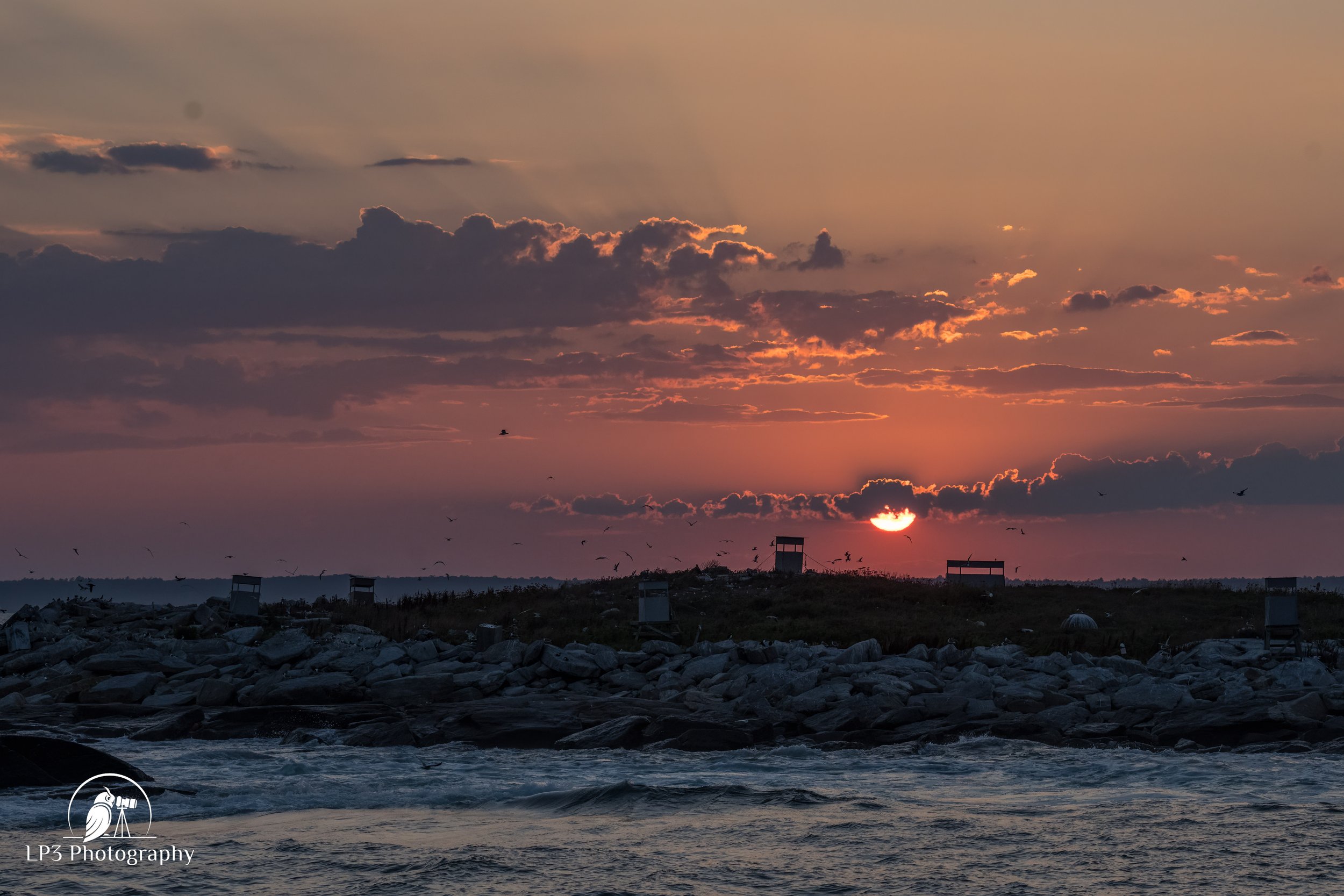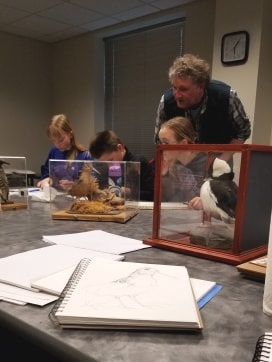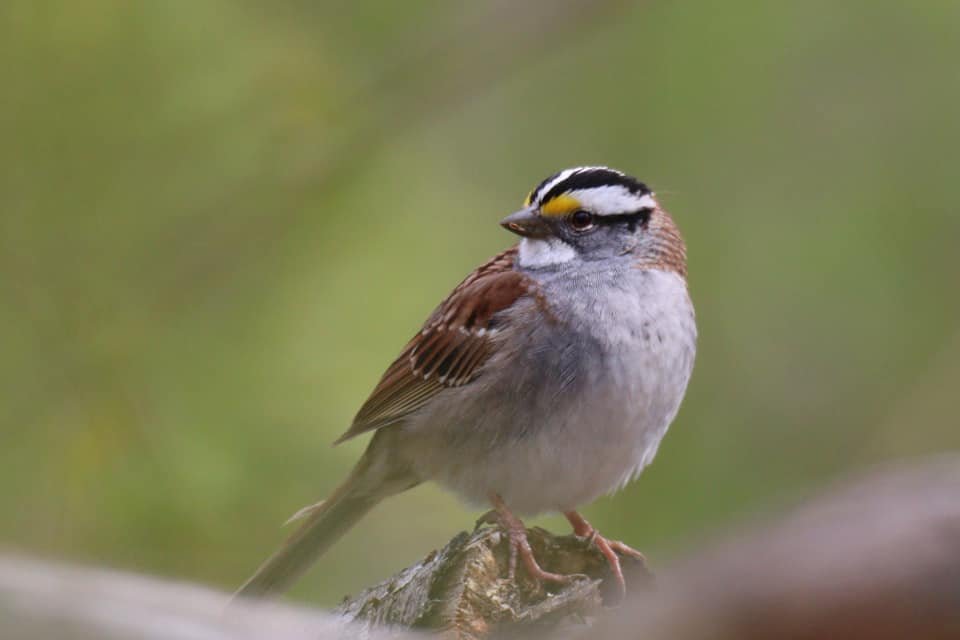by Laurie Pocher
The Maine Young Birders were happy to welcome two new members — Nyssa and Xavier — who joined one of our biggest outings in recent months. Sixteen of us set out to explore Fort Foster on a ridiculously warm November day. While it wasn’t the birdiest of days, it was a beautiful day to be outdoors!
Before we even started our walk, we were greeted by a Carolina Wren calling from the parking area. We didn’t get eyes on the bird, but there’s no mistaking that call! As we walked toward the pier, we encountered our first ‘mob’ of about 30 Black-Capped Chickadees… they were everywhere, and we counted about 160 in total over the course of our 4-hour / 1.6 mile walk.
As we headed towards the beach, we got great looks at a pair of Sharp-Shinned Hawks as they flew overhead. From the beach, we saw several Common Loons, Surf Scoters, and three species of gulls: Bonaparte’s, Herring, and Ring-Billed.
A Bald Eagle left its perch out on the rocks to pursue one of the gulls, but gave up after a short chase and landed on the lighthouse deck railing. A Gray Seal — often described as a ‘horsehead seal’ — appeared with a big splash when it was startled by a diving loon. We paused to take a group photo, and a small flock of Rock Pigeons escorted us off the pier.
We walked the trails along the shore, where we counted Double-Crested Cormorants and Great Black-Backed Gulls out on the rocks. On the marsh side of the path, we encountered several Northern Mockingbirds, as well as Purple and House Finches and American Goldfinches. Small pods of American Black Ducks and Mallards were foraging in the pond.
As the morning got warmer (over 70° by the time we left), we encountered several dragonflies and butterflies, including a Monarch, several American Lady butterflies, and a sulfur butterfly (potentially Clouded Sulfur) . A Yellow-Rumped Warbler was enjoying the late-season bumper crop of insects, while another mob of Black-Capped Chickadees worked the seed heads. We saw a single White-Winged Scoter offshore and looked (in vain) for a Black Scoter to complete the trio.
On a wooded path, we came upon a small group of Red-Breasted and White-Breasted Nuthatches and Brown Creepers digging into the bark and lichen. It was fun to watch the Nuthatches work their way across the branches and down the trunks, while the Brown Creepers work their way from the bottom up. We also saw both Golden-Crowned and Ruby-Crowned Kinglets flitting around nearby.
Our Woodpecker sightings throughout the morning included Downy, Red-Bellied, and Pileated, as well as a Northern Flicker. And we counted three species of Sparrows: Song, Swamp and White-Throated.
We stopped back at the beach on our way back to the cars, where we saw one of the Sharp-Shinned Hawks harassing a Merlin, who quickly decided to move along to a different hunting ground.
In addition to the species noted above, we also saw over a dozen Canada Geese, and several American Crows, Blue Jays and Dark-Eyed Juncos.
By the time we left around noon, we’d tallied 37 species and 375 individual birds. You can see our full checklist here: Fort Foster eBird Checklist 11-5-2022
Our next outing will be the Christmas Bird Count in December. Until then… happy birding!





























































































































































































